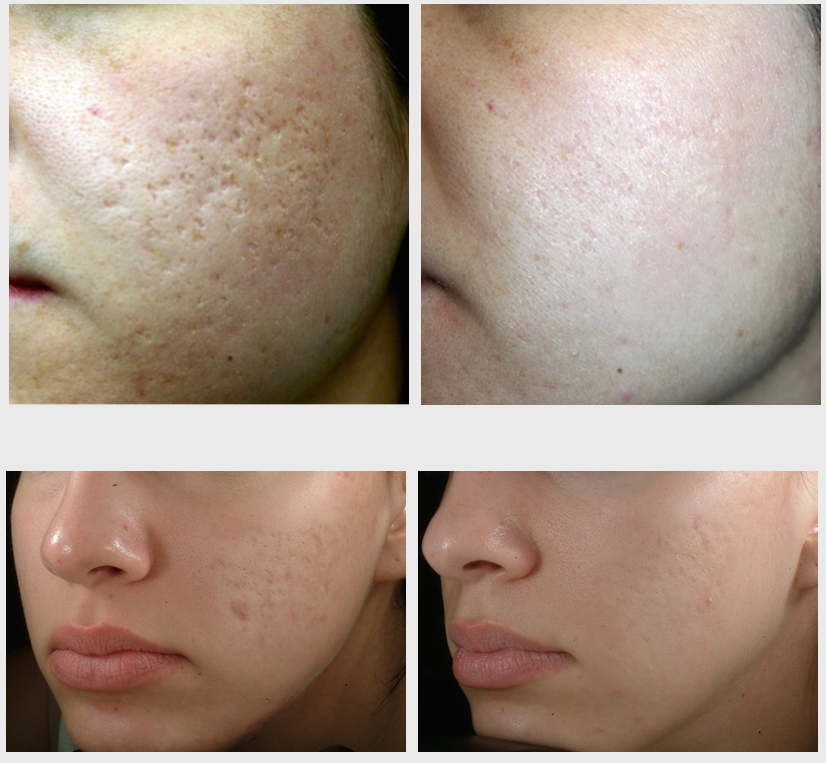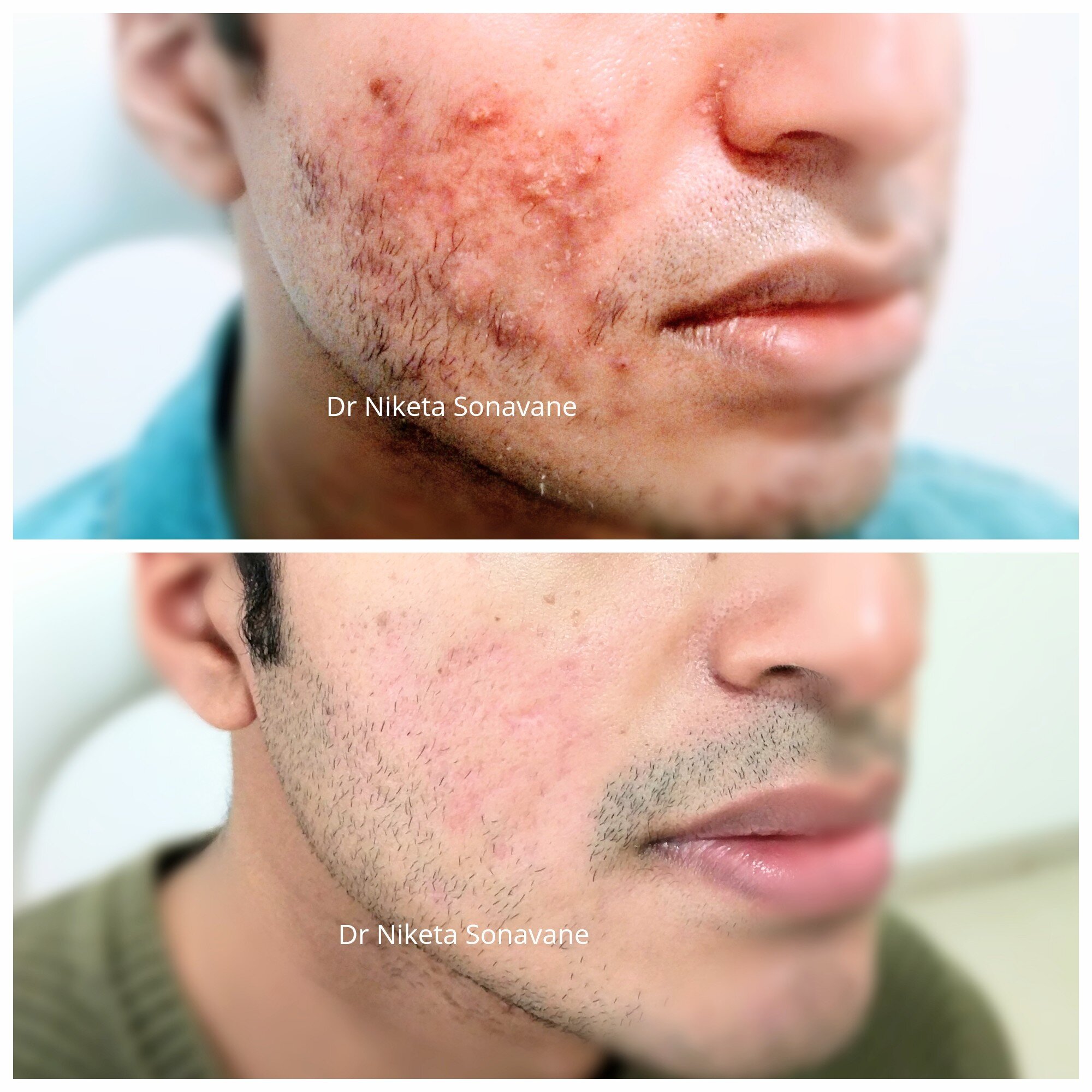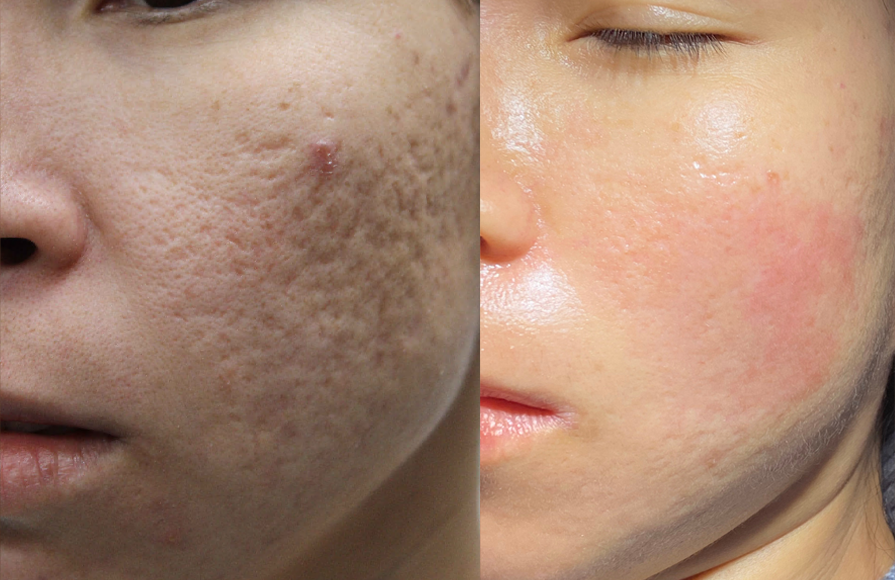Recognizing the Various Skin Problem and Efficient Therapy Alternatives for Acne Scars
Acne scars represent a complicated interplay of skin problem that considerably influence individuals' self-confidence and overall skin health and wellness. Understanding the distinct types of acne scars-- hypertrophic and atrophic-- along with their underlying reasons, is crucial for identifying reliable therapy methods. Numerous therapeutic choices exist, ranging from advanced skin-related treatments to natural treatments. Nonetheless, the efficiency of these therapies typically depends upon personalized evaluations by qualified experts. As we discover the landscape of acne mark monitoring, it becomes evident that the journey toward clearer skin may involve more than just topical services.
Kinds Of Acne Scars

In contrast, hypertrophic scars arise from an overproduction of collagen throughout the recovery process, resulting in elevated areas on the skin. These scars are frequently firm and can differ in shade, in some cases showing up red or darker than the surrounding skin.
Comprehending these types of acne marks is important for developing an effective therapy plan - acne scars. Choices might include chemical peels, laser treatment, microneedling, or facial fillers, tailored to the certain scar type. A detailed consultation with a dermatologist can help determine the most appropriate treatment, taking right into account the person's skin kind, scar seriousness, and overall skin health
Reasons For Acne Scarring
Scarring occurs as an outcome of the body's all-natural recovery feedback to swelling and injury triggered by acne lesions. When acne types, it sets off an inflammatory action, bring about the launch of different cytokines and development elements that advertise healing. Nonetheless, this procedure can occasionally result in excessive tissue development or inadequate repair work, causing scars.
The key causes of acne scarring include the seriousness of the acne itself, period of the lesions, and specific skin kinds. Severe inflammatory acne, such as cysts and nodules, is most likely to cause scarring due to much deeper cells damage. Furthermore, improper handling of acne lesions, such as pressing or selecting, can exacerbate cells injury and swelling, boosting the probability of scarring.
Genetic tendency likewise plays a significant role; individuals with a household background of scarring are at a higher threat. Additionally, skin kind and shade can influence mark formation, as darker complexion may experience post-inflammatory hyperpigmentation, while lighter skin might create atrophic scars.
Ultimately, recognizing these causes is necessary in handling acne and minimizing the potential for scarring.

Treatment Alternatives for Scarring
Efficient therapy choices for acne scarring vary relying on the kind and severity of the scars. Usually classified into atrophic, hypertrophic, and keloid marks, these conditions need customized strategies for optimum results.
For atrophic marks, which are defined by a loss of cells, treatments such as chemical peels, microdermabrasion, and laser therapy are commonly utilized. These methods advertise skin revival and promote collagen manufacturing, consequently boosting skin texture. Subcision, a minimally invasive treatment, can likewise be reliable by breaking up coarse bands underneath the skin.
Hypertrophic and keloid marks can be more testing to deal with. Alternatives include corticosteroid shots to decrease inflammation and flatten the marks. In many cases, cryotherapy or laser therapy may be advised to minimize their look.
Surgical choices are readily available for extreme scarring, where excision or skin grafting might be needed. It's necessary for individuals to speak with a skin doctor to evaluate their particular scar kind and go over skin rejuvenation treatments one of the most appropriate treatment strategy. Incorporating multiple therapies usually yields the ideal end results, ensuring that each individual's special skin problem is attended to efficiently.
Home Remedies and All-natural Solutions
All-natural options and home treatments can offer an easily accessible strategy for people seeking to enhance the look of acne scars (skin rejuvenation treatments). Numerous ingredients discovered in the home cooking area have demonstrated potential advantages in boosting skin structure and promoting healing

Another reliable alternative is lemon juice, which serves as a natural exfoliant and can lighten hyperpigmentation. Nevertheless, it must be made use of carefully, as it might create photosensitivity. Oat meal masks are likewise beneficial; their gentle exfoliation can aid eliminate dead skin cells while comforting irritability.
Vital oils, such as tea tree oil and lavender oil, can further sustain mark recovery because of their antimicrobial residential or commercial properties. It is critical to execute a patch test before applying any solution to guarantee there are no unfavorable responses. These natural options can be a complementary strategy in the trip to decrease acne scars.
Preventing Future Scarring
Adopting an aggressive method to skin care can dramatically reduce the check over here risk of developing future acne marks. Among the vital approaches is to handle acne successfully as it emerges. This includes utilizing non-comedogenic skincare items and medicines prescribed by skin doctors that target acne without aggravating the skin. Routine cleansing, peeling, and hydration can assist preserve skin health and avoid clogged up pores.
In addition, avoiding the lure to select or press acne lesions is essential, as this can cause swelling and succeeding scarring. Rather, individuals need to concentrate on applying topical treatments that promote recovery and decrease inflammation. Components such as salicylic acid, benzoyl peroxide, and retinoids are understood for their efficiency in taking care of acne and minimizing marks.
Sun security is another vital component; direct exposure to UV rays can hinder and dim marks healing. Using a broad-spectrum sunscreen daily can mitigate these effects.
Finally, preserving a healthy diet plan abundant in antioxidants and remaining moisturized assistances skin regrowth. By carrying out these safety nets, people can substantially lower their threat of future scarring and advertise general skin health and wellness.
Final Thought
To conclude, an extensive understanding of browse around here acne marks, including both atrophic and hypertrophic types, is essential for effective therapy approaches. Tailored interventions, including expert therapies and natural remedy, can dramatically enhance skin look and structure. Precautionary procedures also play a crucial duty in reducing future scarring. Appointment with a skin doctor stays critical to design tailored approaches that think about individual skin types and mark extent, eventually improving the effectiveness of mark monitoring strategies.
Acne scars stand for a complex interaction of skin conditions that considerably effect individuals' self-worth and overall skin wellness. The 2 main categories of acne scars are hypertrophic and atrophic marks. These marks are further classified right into 3 subtypes: ice pick marks, which are narrow and deep; boxcar marks, which are broader and have well-defined edges; and rolling marks, which produce a wave-like appearance due to uneven skin texture.
A comprehensive appointment with a dermatologist can aid identify the most suitable treatment, taking into account the person's skin type, mark severity, and total skin wellness.
Consultation with a skin specialist remains important to devise individualized methods that think about individual skin types and scar intensity, eventually enhancing the efficiency of scar monitoring strategies.